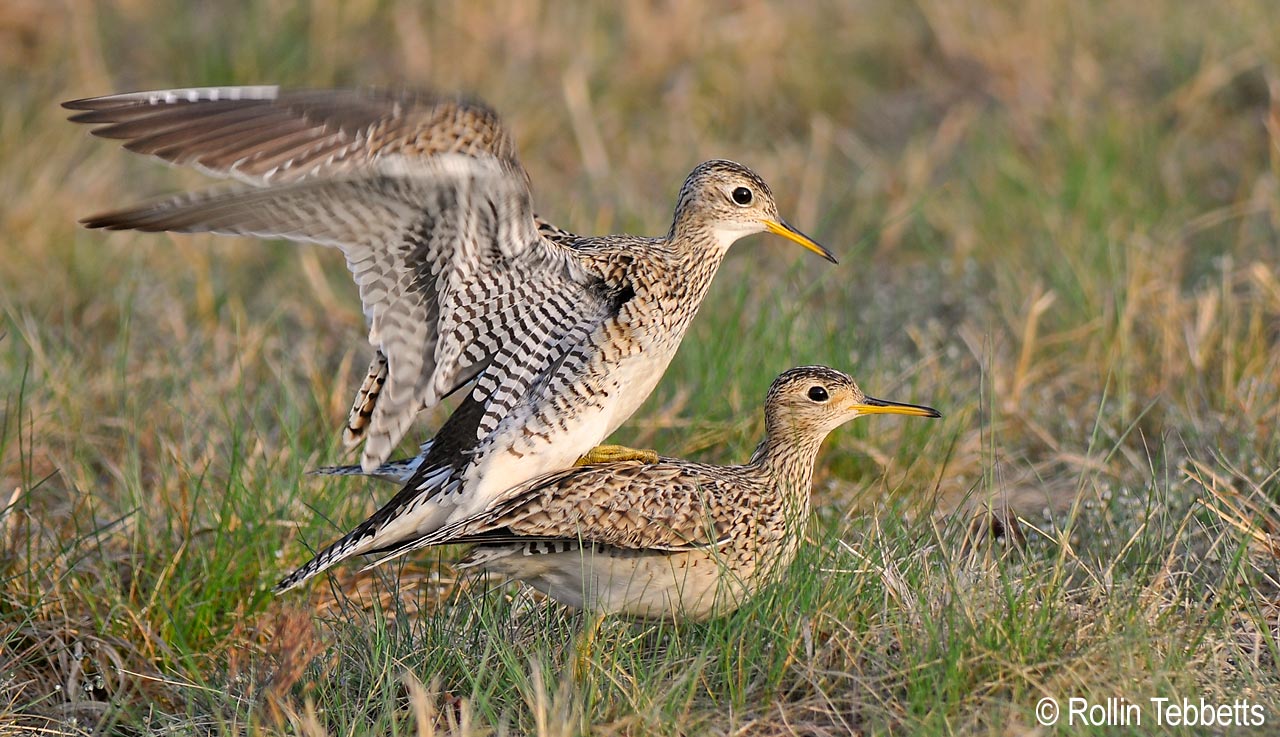Upland Sandpipers Doing It
FEEL GOOD about these copulating Upland Sandpipers not only because this photo offers us a cheap thrill. Feel good any time this threatened grassland bird reproduces. These are birds in trouble. During the past century, Upland Sandpiper numbers have fallen in alarming proportions.
Once common in the North American Plains and western Arctic, this lanky shorebird flew into a double whammy. First, hunters shot Upland Sandpipers, for their tender meat, by the hundreds or thousands per day, shipping them east by the railcar load. Once the shooting stopped (owing to the Migratory Bird Treaty Act of 1918), the habitat destruction began. Native grasslands fell to the plow and became croplands instead. You won’t find Upland Sandpipers doing it in corn fields.
Rare is a shorebird not of the shoreline. “Pinheads,” as we affectionately call them, are exclusively birds of dry, open grasslands. This photos came from a site in Connecticut a few years ago. I’ve been meaning to post it ever since it sent me into the upper echelons of photographic jealousy. The photographer who did so is Rollin Tebbetts, formerly of Cabot, Vermont (well, you can take Rollin out of Cabot but you’ll never take the Cabot out of Rollin). At some point I’ll devote an entire gallery to Rollin’s bird photography. You won’t be disappointed.
In the meantime, my pals (and employers) at the Vermont Center for Ecostudies (VCE) have major projects in the works on behalf of Upland Sandpipers and grassland bird conservation in general across the hemisphere. Big things are coming from VCE on grasslands. So if you don’t yet support this amazing group of biologists, please consider doing so.
Next up for me: Dragonflies in New York.

